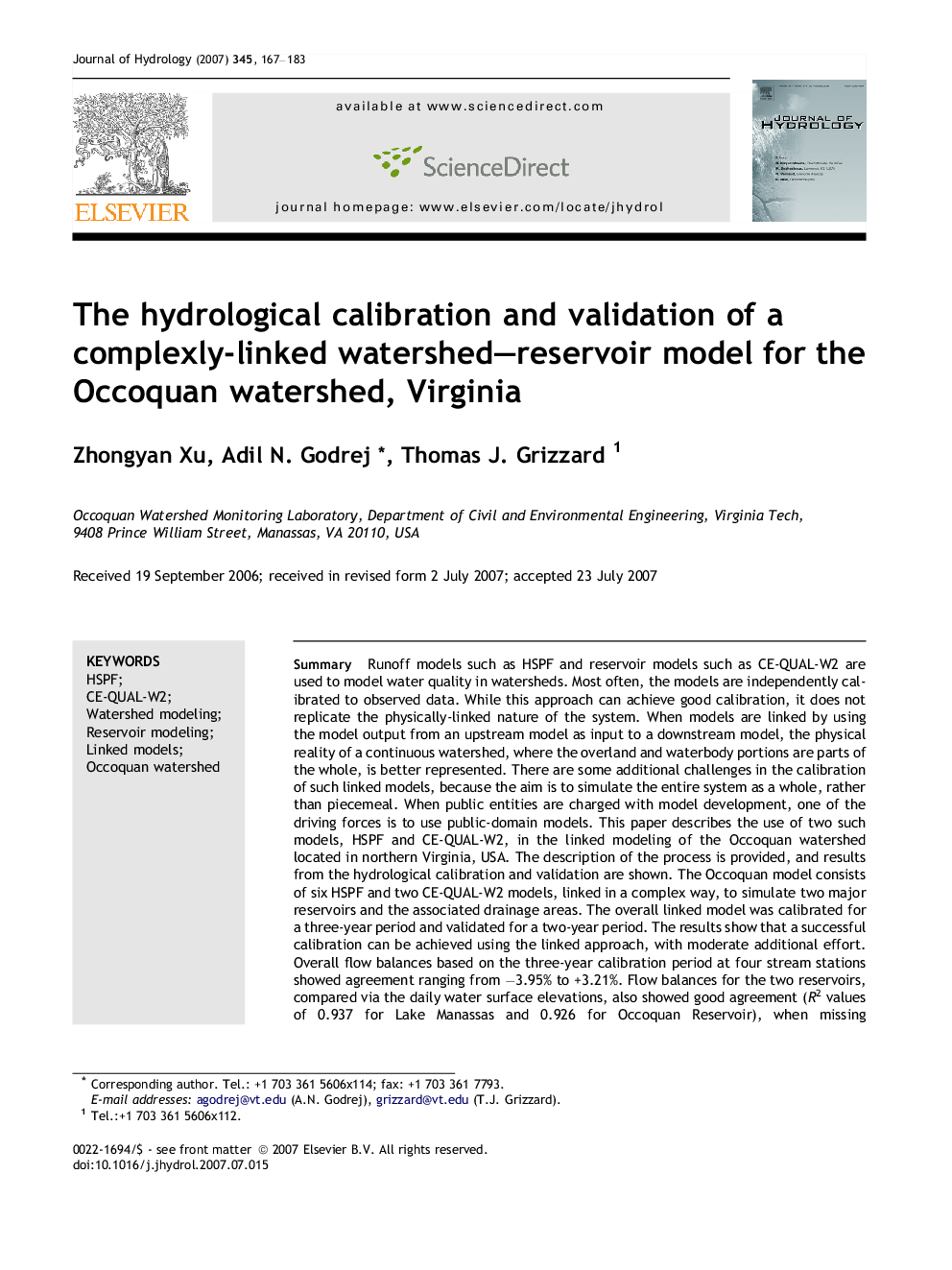| کد مقاله | کد نشریه | سال انتشار | مقاله انگلیسی | نسخه تمام متن |
|---|---|---|---|---|
| 4579515 | 1630125 | 2007 | 17 صفحه PDF | دانلود رایگان |

SummaryRunoff models such as HSPF and reservoir models such as CE-QUAL-W2 are used to model water quality in watersheds. Most often, the models are independently calibrated to observed data. While this approach can achieve good calibration, it does not replicate the physically-linked nature of the system. When models are linked by using the model output from an upstream model as input to a downstream model, the physical reality of a continuous watershed, where the overland and waterbody portions are parts of the whole, is better represented. There are some additional challenges in the calibration of such linked models, because the aim is to simulate the entire system as a whole, rather than piecemeal. When public entities are charged with model development, one of the driving forces is to use public-domain models. This paper describes the use of two such models, HSPF and CE-QUAL-W2, in the linked modeling of the Occoquan watershed located in northern Virginia, USA. The description of the process is provided, and results from the hydrological calibration and validation are shown. The Occoquan model consists of six HSPF and two CE-QUAL-W2 models, linked in a complex way, to simulate two major reservoirs and the associated drainage areas. The overall linked model was calibrated for a three-year period and validated for a two-year period. The results show that a successful calibration can be achieved using the linked approach, with moderate additional effort. Overall flow balances based on the three-year calibration period at four stream stations showed agreement ranging from −3.95% to +3.21%. Flow balances for the two reservoirs, compared via the daily water surface elevations, also showed good agreement (R2 values of 0.937 for Lake Manassas and 0.926 for Occoquan Reservoir), when missing (un-monitored) flows were included. Validation of the models ranged from poor to fair for the watershed models and excellent for the waterbody models, thus indicating that the current model can be used to explore waterbody issues, but should be used with appropriate care for watershed issues. The study objective of being able to use the Occoquan model to study the impact of land use changes on hydrodynamics and water quality in the waterbodies, particularly the Occoquan Reservoir, can be met with the current model. However, appropriate judgment should be exercised when using the model for the prediction of watershed runoff. One of the advantages of using the linked approach is to develop a direct linkage between upstream land use changes and downstream water quality. This makes it easier for decision-makers to evaluate alternative watershed management plans and for the public to understand the decision-making process. The successful calibration of hydrology provides a solid base for further model development and application.
Journal: Journal of Hydrology - Volume 345, Issues 3–4, 30 October 2007, Pages 167–183